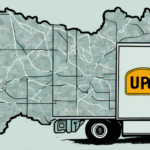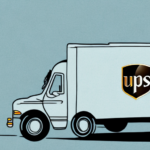Understanding UPS Shipping Rates from Portland, Oregon to Boston, MA
Shipping packages with UPS from Portland, Oregon to Boston, MA requires a clear understanding of the factors that influence shipping rates. These factors include the weight and size of your package, the speed of delivery, the distance it needs to travel, and the type of items being shipped. By comprehensively analyzing these elements and utilizing UPS’s shipping tools, you can optimize your shipping strategy to reduce costs and ensure timely deliveries.
Factors That Affect UPS Shipping Rates
Several key factors determine the cost of shipping with UPS:
- Weight: Heavier packages incur higher shipping costs due to the increased resources required for transportation.
- Dimensions: UPS considers both actual weight and dimensional weight, charging based on whichever is greater. Large, lightweight items may be priced higher due to the space they occupy.
- Delivery Speed: Faster delivery options, such as overnight or express shipping, are more expensive than standard ground shipping.
- Distance: Longer shipping distances result in higher costs due to the extended transportation resources needed.
- Item Type: Shipping hazardous or fragile items may require special handling, increasing the overall cost. High-value items may also necessitate additional insurance.
For more detailed information on UPS shipping rates, visit the UPS shipping rates guide.
How to Calculate UPS Shipping Rates
Calculating shipping rates with UPS is straightforward using their online shipping calculator. To estimate your shipping costs, you will need to provide:
- Weight and dimensions of your package
- Origin and destination ZIP codes
- Desired delivery speed
UPS offers various shipping options, including ground, air, and international shipping, each with its own rate structure. Businesses can benefit from discounted rates by opening a UPS account or through volume discount programs. Utilizing appropriate packaging materials can also help reduce costs by minimizing package size and avoiding additional fees for oversized or damaged packages.
For more details on calculating shipping rates, refer to the UPS dimensional weight guide.
Differences Between UPS Shipping Methods
UPS provides a range of shipping methods tailored to different needs:
- Ground Shipping: The most cost-effective option for packages that do not require fast delivery. Ideal for domestic shipments within the continental United States.
- Air Shipping: Faster delivery options such as UPS Next Day Air and UPS 2nd Day Air are suitable for time-sensitive packages but come at a higher cost.
- Freight Shipping: Designed for large and heavy items that require special handling and equipment.
Delivery times can vary based on the shipping method, destination, and time of year. During peak seasons, such as holidays, expect longer delivery times due to increased demand. UPS also offers comprehensive tracking services to monitor your package's progress in real-time.
Comparison of UPS Shipping Rates with Other Carriers
When selecting a shipping carrier, it's essential to compare the costs and services offered by different providers to ensure you receive the best value for your needs. UPS shipping rates are generally competitive with other major carriers like FedEx and USPS. However, the best choice depends on factors such as delivery speed, package size, shipment frequency, and additional services required.
UPS distinguishes itself with services like guaranteed delivery times, extensive tracking options, and a strong international presence, including customs clearance support. For a comprehensive comparison, you can refer to industry reports from sources such as Business Insider's carrier comparisons.
Tips for Reducing UPS Shipping Costs
To minimize shipping costs with UPS, consider the following strategies:
- Consolidate Shipments: Combine multiple packages into a single shipment to maximize space and reduce overall costs.
- Optimize Package Size and Weight: Use appropriately sized packaging to avoid dimensional weight fees and reduce shipping costs.
- Negotiate Rates: If you ship frequently, negotiate volume discounts with UPS or work with a third-party logistics provider to secure better rates.
- Select Cost-Effective Shipping Options: Choose ground shipping when speed is not a priority and take advantage of UPS's delivery options like UPS My Choice for additional savings.
- Proper Packaging: Use high-quality packaging materials to protect your items, preventing damage and avoiding extra fees for returns or replacements.
Implementing these cost-saving measures can significantly reduce your UPS shipping expenses while maintaining reliable delivery services.
Understanding Dimensional Weight and How It Affects UPS Shipping Rates
UPS uses dimensional weight pricing to account for the space a package occupies during transit. Dimensional weight is calculated by multiplying the length, width, and height of a package and then dividing by a specific divisor, which varies by shipping service. The chargeable weight is the greater of the actual weight or the dimensional weight.
For example, if a package has dimensions of 20" x 20" x 20" (8,000 cubic inches), the dimensional weight with a divisor of 139 would be approximately 57.55 pounds. If the actual weight is 50 pounds, UPS would charge based on the dimensional weight of 57.55 pounds.
Understanding and calculating dimensional weight can help you better estimate shipping costs and make informed decisions about packaging. Refer to the UPS dimensional weight calculation guide for more information.
The Impact of Distance on UPS Shipping Rates
The distance your package travels significantly affects UPS shipping rates. Longer distances require more resources and time, leading to higher shipping costs. For shipments from Portland, Oregon to Boston, MA, the cross-country distance generally results in higher rates compared to regional shipping.
To manage costs, consider the following:
- Plan shipments to optimize delivery routes.
- Use UPS’s rate calculators to estimate costs based on distance.
- Choose the most appropriate shipping method that balances cost and delivery time.
Common Mistakes to Avoid When Estimating UPS Shipping Rates
Accurately estimating UPS shipping rates is crucial to avoid unexpected expenses. Common mistakes include:
- Ignoring Dimensional Weight: Failing to account for dimensional weight can result in higher-than-expected shipping fees.
- Incorrect Weight Estimation: Overestimating or underestimating the actual weight of your package can lead to inaccurate rate calculations.
- Selecting the Wrong Delivery Speed: Choosing a faster delivery option than necessary increases shipping costs.
- Poor Packaging: Using inappropriate packaging can cause damage, leading to additional costs for replacements or returns.
To avoid these errors, ensure you measure and weigh your packages accurately, select suitable shipping options, and utilize UPS’s shipping tools to get precise rate estimates.
How to Negotiate Lower UPS Shipping Rates
Businesses that ship frequently with UPS can negotiate lower shipping rates through volume discount programs. Here are steps to negotiate better rates:
- Analyze Your Shipping Volume: Determine your average monthly and yearly shipping volumes to present to UPS.
- Contact UPS Sales Representative: Reach out to UPS to discuss your shipping needs and explore available discount options.
- Consider Third-Party Logistics Providers: These providers can leverage their shipping volumes to secure better rates on your behalf.
- Evaluate Service Levels: Assess which UPS services you need and where you can optimize to reduce costs.
By effectively negotiating your shipping rates, you can achieve significant savings and improve your shipping budget.
What to Consider When Choosing a Delivery Date with UPS
Selecting the appropriate delivery date with UPS involves several considerations:
- Delivery Speed: Determine how quickly you need the package to arrive and select a shipping method accordingly.
- Recipient Availability: Choose a delivery date when the recipient is available to receive the package, reducing the risk of missed deliveries.
- Seasonal Factors: Account for potential delays during peak seasons, such as holidays, and plan accordingly.
- Time-Sensitive Shipments: For urgent deliveries, opt for guaranteed or expedited shipping options to ensure timely arrival.
Carefully selecting the delivery date and method can enhance customer satisfaction and optimize your shipping efficiency.
Understanding the Role of Packaging in UPS Shipping Rates
Proper packaging plays a critical role in UPS shipping rates and the safe delivery of your items:
- Size Optimization: Use appropriately sized boxes or envelopes to avoid excess dimensional weight charges.
- Protective Materials: Utilize high-quality packing materials like bubble wrap or packing peanuts to protect items and prevent damage.
- Labeling: Clearly label packages with accurate addresses and necessary documentation to avoid delays and additional handling fees.
Efficient packaging not only reduces shipping costs but also ensures that your packages arrive intact, enhancing customer satisfaction.
How to Track Your Package During Transit with UPS
UPS provides robust tracking tools to monitor your package throughout its journey:
- UPS Website: Enter your tracking number on the UPS website to view real-time updates on your package’s status.
- Mobile App: Use the UPS mobile app for convenient tracking on the go, including notifications and estimated delivery times.
- Advanced Tracking Options: For larger or time-sensitive shipments, UPS offers features like real-time GPS tracking, signature confirmation, and proof of delivery.
Effective tracking allows you to keep informed about your shipment’s progress and quickly address any issues that may arise during transit.
The Benefits of Using a Third-Party Logistics Provider for Your UPS Shipments
Partnering with a third-party logistics (3PL) provider can offer numerous advantages for your UPS shipments:
- Cost Savings: 3PLs often have established relationships with carriers like UPS, enabling them to negotiate better rates on your behalf.
- Shipping Optimization: These providers can streamline your shipping processes, ensuring efficiency and reducing errors.
- Comprehensive Services: 3PLs offer a range of services including inventory management, order fulfillment, and shipping analytics.
- Scalability: They can easily adjust to your shipping needs as your business grows.
Leveraging the expertise of a 3PL provider can enhance your shipping operations, reduce costs, and improve overall customer satisfaction.
How to File a Claim for Lost or Damaged Packages Shipped via UPS
If your package is lost, stolen, or damaged during transit with UPS, you can file a claim for reimbursement. Follow these steps to initiate the claims process:
- Gather Documentation: Collect all necessary information, including the shipping label, tracking number, photos of the damaged package, and receipts for valuable items.
- Submit a Claim: Visit the UPS claims page on their website and fill out the required forms with detailed information about the incident.
- Provide Supporting Evidence: Attach any relevant documentation, such as photographs of the damage and receipts demonstrating the value of the contents.
- Follow Up: Keep track of your claim status through UPS’s online tracking tools or by contacting customer service.
Once your claim is reviewed and approved, UPS will reimburse you for the eligible amount based on the terms and conditions of their service agreement.
Understanding UPS shipping rates from Portland, Oregon to Boston, MA involves considering various factors such as weight, size, delivery speed, and distance. By carefully evaluating these elements and implementing strategies to optimize your shipping approach, you can effectively manage costs and ensure your packages are delivered efficiently and reliably.




















